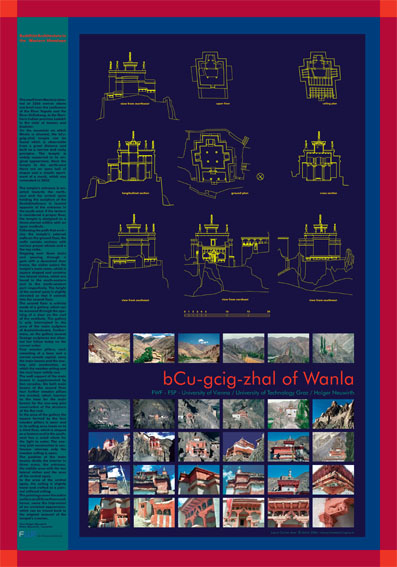
The
temple’s entrance
is oriented towards the north-east and the central apsis holding the
sculpture of the Avalokiteshvara
is located
opposite of the entrance in the south-west. If the lantern is considered
a proper floor, the temple is designed as a three-storied edifice with
an open vestibule.Stepping over three stairs and passing through a gate
with a decorated door frame, the visitor enters the temple’s
main room, which is square shaped and contains two lateral niches,
which are found in the
south-eastern and in the north-western part respectively. The height
of the central apsis is slightly elevated so that it extends into the
second floor. The second floor is entirely made of a gallery, which
can be accessed through the opening of a door on the roof of the
vestibule.
The gallery
is only interrupted in the area of the main sculpture of Avalokiteshvara.
Furthermore, on the gallery several lineage sculptures are situated
but follow today no the correct order.
The paintings cover the entire surface on all three floors and, hence,
cause the impression of an unvaried appearance, which can be traced
back to the original moment of the tempel’s creation.
Text: Holger Neuwirth
Fotos:
Holger Neuwirth / Christian Luczanits